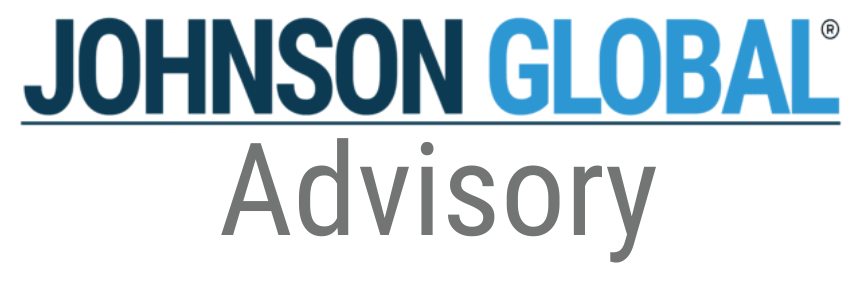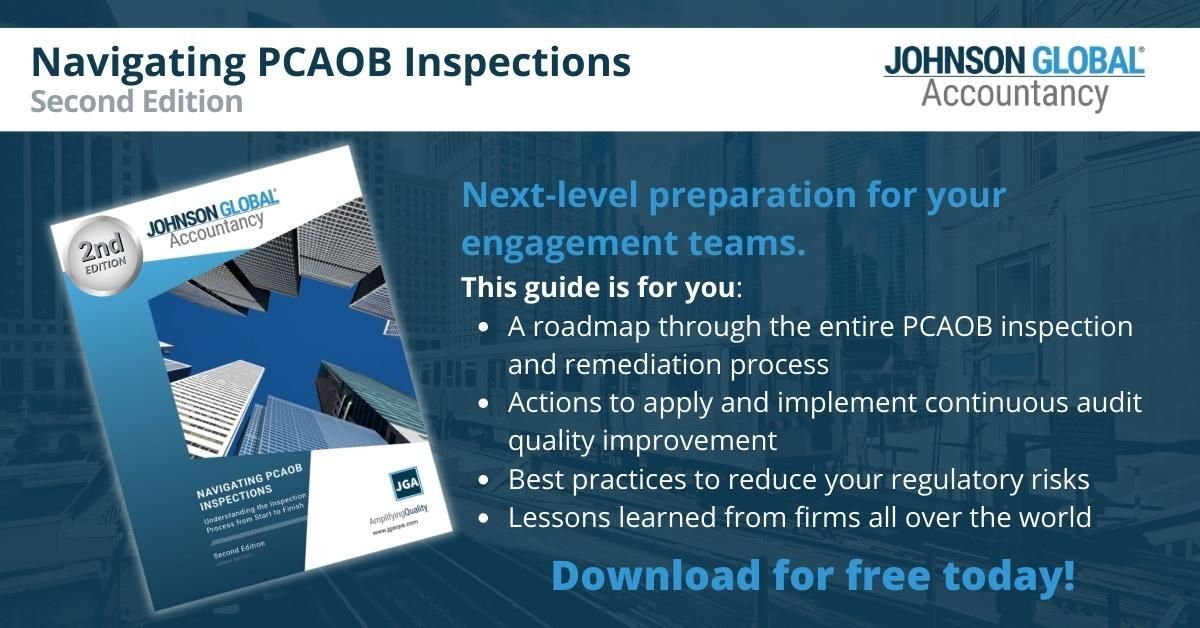Inspection Services
Advisory Services for Public Company Auditors
Inspection Services
Applying our unique experience on both the audit side and the inspection side, JGA helps your team navigate the inspection process as effectively as possible. Our integrated team of former IT and financial statement inspectors work with firms to confidently respond to questions and observations. We draw from our experience conducting hundreds of inspections of firms in dozens of countries, and have collaborated with foreign regulators in several jurisdictions. Our integrated inspection support services include:
- Inspection readiness preparation
- Documentation collection and preparation
- Integrated opening meeting preparation and assistance
- Comment form issue analysis and response
- Draft inspection report analysis and response
- Root cause analysis
- Remediation action plan and response
Navigating PCAOB Inspections Second Edition
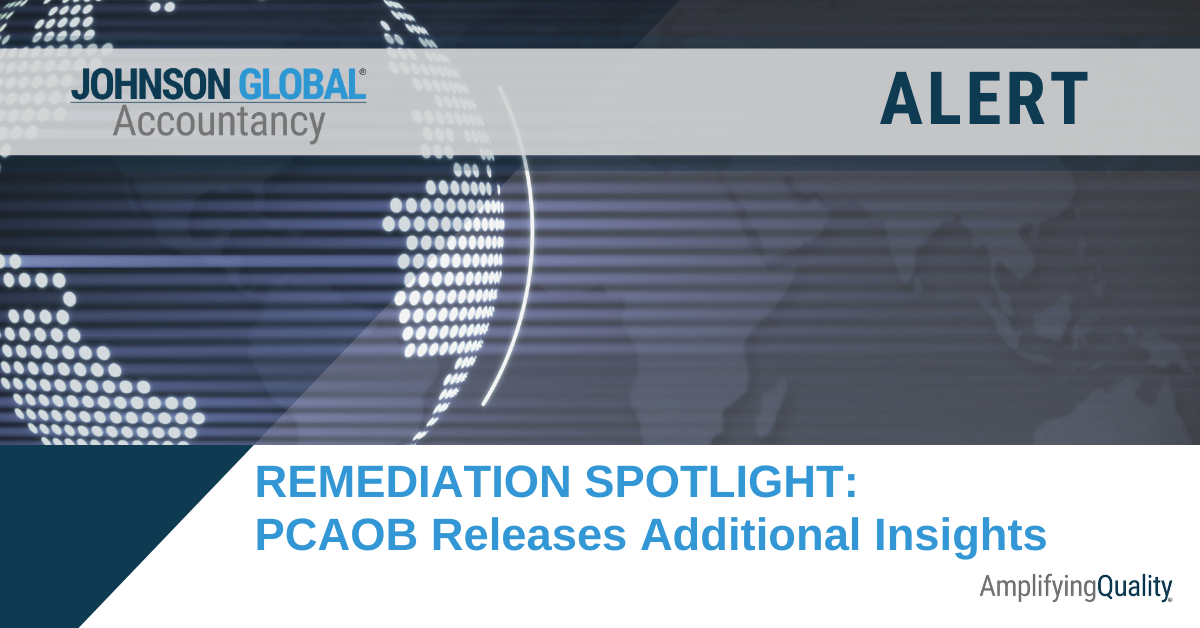
By Geoffrey Dingle
•
07 Mar, 2023
The PCAOB recently released the Spotlight: Additional Insights on the Remediation Process . In it, there is a crucial distinction as to what constitutes a repeat or persistent criticism. "A criticism that occurs in Part II of at least two consecutive inspection reports, or that occurs consistently, even if it skips one or two inspection reports, is considered a repeat or persistent criticism. The inspections staff evaluates similar deficiencies, regardless of how these deficiencies have been categorized in Part II in prior inspection reports. For example, if the year subject to remediation included a QCC related to testing assumptions of estimates, and the prior year included a QCC related to testing assumptions of business combinations, the QCC for the subsequent year would likely count as a recurrence because the underlying deficiency in both instances relates to testing assumptions.” It is important that firms do not mistakenly believe that because a quality control criticism is not reported in one inspection, that the finding, if it comes up again, is not a repeat finding. It is imperative that firms focus on similar deficiencies as they prepare for subsequent inspections to ensure that any remediation or monitoring processes have effectively addressed the deficiency. Also, a firm’s timely reactions to any previous ineffective actions will count in its favor. “The Staff Guidance further discusses the fact that strong remediation efforts, particularly when accompanied by effective firm monitoring procedures and timely adjustments, can weigh favorably in the inspection staff’s recommended remediation determination, even if subsequent inspection results indicate recurrences of the same type of deficiency.” The spotlight further mentions that when employing any new tools to address previous deficiencies, it is critical that the firm ensures that the new tools are mandatory and that its teams are using them effectively. Additionally, as firms develop remediation training programs for teams, the spotlight outlines important aspects to be included that firms may lose sight of. To read the full spotlight please visit the PCAOB’s website by clicking here .
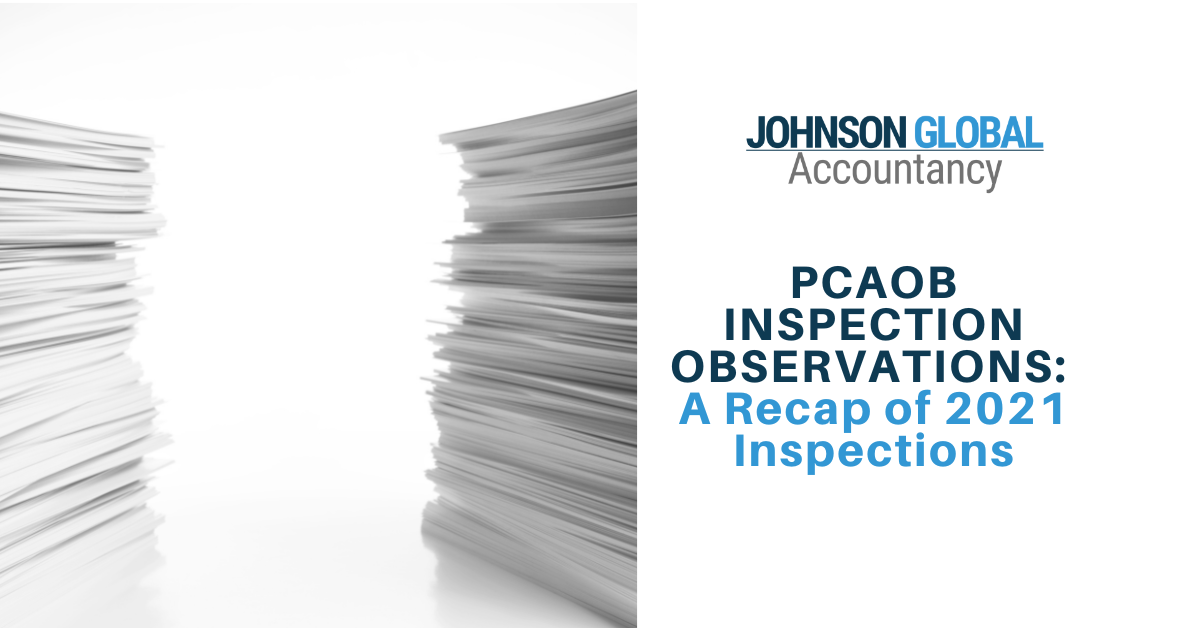
By Geoffrey Dingle
•
16 Feb, 2023
PCAOB Inspection Observations: A Recap of 2021 Inspections As part of its initiative to increase visibility as well as to provide meaningful information, over the past couple years, the PCAOB has released an annual inspections observation report. The 2021 inspection observations, which was most recently published in December 2022, contains various sections which address some of the trends related to inspections, the recurring deficiencies both at the engagement and QC level, as well as some of the best practices observed. Let’s take a closer look at each of the four main sections of the report: Trends in Inspections This is the first visibility into audit quality during the pandemic. During 2021, the PCAOB inspected a total of 690 audits across 141 audit firms; 12 of those firms are annually inspected and the other 129 are triennial firms. 2021 inspections were predominantly over audits of fiscal years ending on December 31, 2020. Overall, the PCAOB found an increase in inspection findings across all inspections. Approximately 55% of audits will have at least one Part I.A and/or Part I.B deficiency, up from 44% in 2020. The PCAOB continued to increase unpredictability in its inspections, both in the selection of issuers and in selection of focus areas. That said, the Board still performs its own risk assessment and intentionally inspected larger public companies with a focus on financial statement areas with a greater risk from COVID, such as impairment and current expected credit losses (CECL). In addition, the PCAOB’s Target Team also performed inspections across firms over specific focus areas. In 2021, the Target Team focused on fraud, going concern, SPACs, and cash and cash equivalents; their findings can be found in the PCAOB’s August Spotlight . Common Deficiencies The most insightful portion of the PCAOB’s spotlight is the section on recurring deficiencies. We’ve written about many of these before, including the Regulator Who Cried Wolf and Repeat Findings , so it should come as no surprise that many of the current year's findings are repeats from prior years. The PCAOB explicitly stated: “We expect audit firm leadership to address the recurring nature of these deficiencies and monitor the effects of actions taken. An audit firm’s inadequate response to address recurring deficiencies may warrant additional action such as the Division of Registration and Inspections referring firms to the Division of Enforcement and Investigations for potential investigation or disciplinary action for failing to comply with PCAOB standards.” We have seen through our work with firms that the PCAOB is in fact taking enforcement seriously. The PCAOB has also expressed its expectation that firms begin performing root cause analyses to understand the reason for repeat findings. Root cause and remediation are significant parts of the new quality control standards , so firms need to take this statement to heart. Let’s take a closer look at each of the sections identified by the Board: Internal Control over Financial Reporting (ICFR) Management review controls (MRCs): MRCs continue to be one of the most cited deficiencies in inspections. Engagement teams need to understand and document precision, review procedures performed by management and how the engagement team validated these procedures, identification of items for follow-up and whether such items were addressed. Identifying and selecting controls to test: This goes back to understanding the likely sources of potential misstatement or “what could go wrong” (WCGW). Each WCGW should have a correlated control to address the risk. This includes controls around completeness and accuracy of information used in controls. Testing operating effectiveness (aside from MRCs): Engagement teams need to ensure they are sufficiently testing all relevant control objectives. Remember that inquiry alone is not sufficient. Also, the nature of the test and the evidence obtained must correlate to the assessed risk. Evaluating deficiencies in ICFR : Engagement teams are quick to document why every deficiency is “just a deficiency” and not a material weakness. We encourage teams to begin with the concept that if a control is in scope, it is designed to address a risk of material misstatement, which means that if it is deficient, it is a potential material weakness. Start with that premise and then consciously pare it back based on the relevant criteria. ICFR is especially important in integrated audits given the fact that controls often impact the nature, timing and extent of the substantive audit. In other words, if controls are not tested properly, then the substantive audit testing approach may no longer be supported. Revenue and Related Accounts Evaluating accounting: Especially in light of the new ASC 606 guidance, the PCAOB has focused on the auditor’s evaluation of the technical accounting, in accordance with the applicable financial reporting framework. Inspectors consistently took issue with engagement teams’ failures to evaluate the identification and satisfaction of performance obligations and the allocation of transaction price. In addition to accounting, the PCAOB cited concerns around insufficient footnote disclosures. Completeness and Accuracy (C&A): This topic seems to recur throughout all the PCAOB’s findings and will only continue to rise in importance as companies move away from more manual processes and implement more information systems, automating significant processes. Data is only as useful as it is complete and accurate (if generated from inside the company) or relevant and reliable (if generated from outside the company). Technology-Based Tools: Firms are increasingly using software audit tools in substantive audit procedures; in particular, the PCAOB noted increased use of technology in revenue, but also in testing inventory, journal entry testing, investments, and CECL. Inspectors are identifying concerns around: Populations used in data analytics: What is the population being used? Is it complete? Is it relevant? Is the data “pure” or is it mixed with other irrelevant information? For instance, if the engagement team is performing a cash proof for revenue, how does the engagement team know that the cash population is ONLY for revenue payments? Does the cash population include cash payments for other financial statement accounts? Resolving exceptions identified: When using data analytics, all exceptions need to be identified AND resolved. Accounting Estimates Estimates have always been difficult to audit, but COVID especially challenged the auditing of estimates given subjective assumptions and measurement uncertainty. The most prominent findings included: CECL – Engagement teams often did not sufficiently evaluate qualitative factors used in calculating reserves. The PCAOB specifically indicated its concerns around teams’ failures to evaluate changes in qualitative factors AND/OR evaluating the lack of changes year over year. Reasonableness of significant assumptions: Specifically, in forecasted cash flows, engagement teams failed to sufficiently evaluate the basis for the assumption as well as the consistency of the assumption within the industry or compared to external factors (i.e. COVID) as well as within company, taking into account management’s intent and ability. In other words, as part of the evaluation of significant assumptions, it’s not enough to just obtain some support; auditors need to take a step back and fulfill all requirements of the standard , including comparing the assumptions to external factors, to management’s intent or ability, and to past years’ performance (i.e. perform a lookback review) to understand changes AND lack of changes in assumptions. This is especially true given the unprecedented nature of COVID. Inventory Valuation: Engagement teams failed to sufficiently test the cost of material inventory balances. If a balance is material, by its very nature, it poses a risk of material misstatement. We’re not saying you have to audit all 100% of inventory, but the engagement team needs to evaluate (and potentially document) the residual risk of material misstatement for all untested balances. C&A: Yet again, completeness and accuracy of information used in valuation testing, such as inventory reserves, needs to be tested and documented. Equity and Equity Related Transactions Evaluating accounting: Again, teams need to evaluate technical accounting to ensure it is in accordance with the applicable financial reporting framework. In particular, the PCAOB found that many auditors concluded incorrectly on the accounting for warrants related to SPACs . Digital Assets Audit evidence: The PCAOB challenged the appropriateness of audit evidence used in performing audits of digital assets . Said differently, the PCAOB is challenging the completeness and accuracy and/or relevance and reliability of information used in audit procedures when testing digital assets. Other Areas CAMS : Engagement teams need to keep in mind the completeness of their evaluation of potential CAMs and ensure the completeness and accuracy of the CAMs disclosure in the audit report. The standard is clear that ALL communications to audit committees must be evaluated and documented, even if it’s clear that the communication is not a CAM. Audit Report: Despite being several years old, engagement teams are still struggling to appropriately calculate auditor tenure, specifically, the start date. For more information, the PCAOB has provided specific guidance . Audit Committee (AC) Communications: Teams need to remember to communicate ALL required AC communications, including discussing use of accounting firms and shared service organizations, critical accounting policies/practices, and providing material written communications, such as the management rep letter. Form AP: Like audit tenure, Form AP has been a requirement for several years, but firms are still failing to accurately (specifically regarding use of other accounting firms and accurately calculating % participation based on hours incurred) and timely file Form AP. Again, the PCAOB has specific guidance over Form AP. Audit Documentation: The PCAOB was often provided with “persuasive other evidence” during inspections, indicating that firms are failing to archive a complete set of workpapers. Fraud Considerations: Recurring findings include failing to evaluate/document the completeness of the JE population, examining underlying support for journal entries selected for testing, and testing all journal entries meeting the “characteristics of potential fraudulent entries.” Quality Control Considerations Through the inspection process, the PCAOB also reviews different quality control aspects of a firm. Some of these findings are identified through specific inspection procedures (e.g. independence checks) while other findings are derived from themes emerging from the results of engagement inspections (e.g. supervision and review). With the release of the proposed QC 1000 , the PCAOB will continue to focus more on the effectiveness of firms’ systems of quality control. Independence SEC Reg S-X Rule 2-01: The PCAOB continues to find that firms are failing to prevent and/or identify Rule 2-01 violations. Inspection results indicated that firms’ internal independence compliance and monitoring is often deficient. Audit Committee pre-approval: Both the SEC and the PCAOB have specific AC pre-approval requirements for audit work, tax services, and non-audit work. In other words, all services performed for a public issuer audit client must be pre-approved in some capacity by the audit committee. Supervision and Review The issues below typically stem from audit engagement failures identified in the section above. In other words, if there is a deficiency in auditing estimates (which are typically linked to significant and/or fraud risks), the PCAOB takes the stance that a thorough review by the engagement partner and EQR should/could/would have identified these issues and thus, a prevalence of Part I issues indicates a deficiency in the supervision and review. Specifically: Documentation: Audit documentation is often insufficient for managers, partners and EQRs to perform a thorough review. Evidence of EQR review: The PCAOB took issue with the lack of evidence of review. Remember, an EQR review is more than just a sign-off. Internal Monitoring Performing reviews: Internal inspections are a requirement under the current PCAOB QC 20 . They will become an even more important part under the newly proposed QC 1000. Whether internally, externally, or co-sourced, the point is, firms must perform internal inspections. Ineffective reviews: The PCAOB often performs inspections of audits previously inspected by the firm itself. The point is to evaluate the effectiveness of the firms’ review. When the PCAOB identifies issues NOT identified by the firm, it’s an indication that the firms’ reviews are ineffective. Registration State registration: The PCAOB identified multiple audits performed in states where firms are not licensed / registered. Good Practices In an attempt to provide more useful information to firms to help remediate deficiencies and ensure quality audits, the PCAOB has begun to release “good practices” it has identified from various interviews with firms. These are important tools and concepts that firms should consider incorporating into their own systems, especially considering the impending overhaul of QC systems. Templates Many firms are developing templates (that pull directly from the standards) to help facilitate the execution of audit procedures, such as how to test MRCs or how to audit accounting estimates. Improving risk assessment Given an increased focus on risk assessment , many firms are revising how they approach risk assessment; ultimately, we perform risk-based audits, so let’s be sure to thoroughly evaluate the risks and then link our audit procedures to the assessed risks. Subject Matter Experts (SMEs) The PCAOB noted that many firms are requiring the use (or perhaps consultation) of SMEs in specific audit areas, typically those with higher risk, such as business combinations. In addition, many firms have used personnel outside of the engagement team to help with reviews of certain areas, such as CAMs. SMEs and targeted reviewers help bring expertise and drive consistency in approach and execution across the firm. Independence Technology: Firms are investing in technology to help prevent / detect independence violations. For instance, technology tools tracking time charged vs. financial holdings vs. independence sign-offs. Technology can also be used to expand/change how certain procedures are performed, such as importing brokerage statements as opposed to manual input of financial holdings. Confirmations: More frequent independence confirmations (i.e. quarterly or semi-annually) have also shown to help prevent independence violations. Disciplinary actions: Finally, some firms are implementing new processes, including disciplinary actions, for failure to comply with firm policies and independence requirements. Supervision and Review Metrics: Firms are using technology to start tracking supervision and review, measuring actual reviews against targeted timelines. Achieving these milestones, or failing to, is also being incorporated into performance evaluations. Similarly, firms are establishing certain ranges for various metrics, such as an engagement partner’s and EQR’s hours as a percentage of total audit hours. For partners and EQRs who fall outside the range, firms are meeting to understand the circumstances and conclude on whether additional measures are needed to ensure audit quality. Templates: As mentioned above, templates (and training) can help guide reviews in accordance with standards. Key Takeaways Whew! Breathe for a minute; that’s a lot of information. Recurring findings are apparent and the PCAOB expects firms to drive change to remediate these issues. There are several resources (as evidenced by all the links) to help better understand the identified issues and to help resolve the deficiencies. You don’t have to go it alone; so, don’t hesitate to reach out if you don’t know where to start.
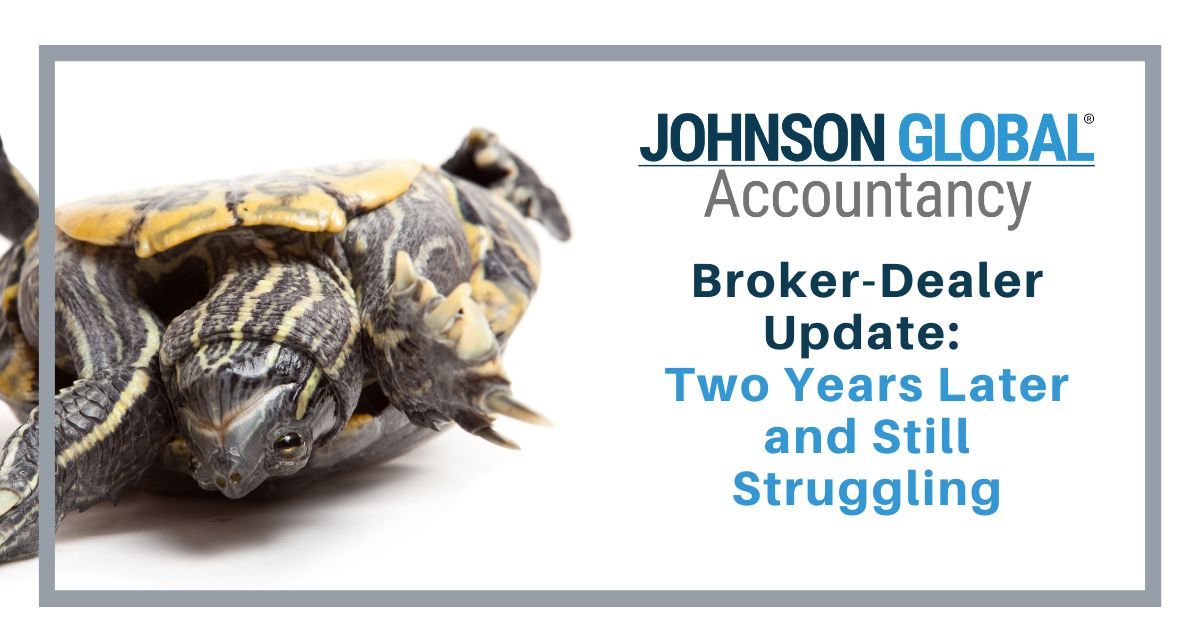
By Dane Dowell, JGA Director and Don Melody, JGA Director
•
04 Oct, 2022
In September of 2020, we published an article summarizing the state of the broker-dealer inspection program, noting that at the time, it had been nine years and still running as an interim program. Now, in August of 2022, the PCAOB released its Annual Report on the Interim Inspection Program Related to Audits of Brokers and Dealers (“2022 Report”) and sure enough, not much progress has been made, both with regards to audit quality or with regards to establishing a permanent program. As a refresher, the interim program was established in response to the 2010 Dodd-Frank Act. The Board originally anticipated “being in a position to propose rules for a permanent program by 2013.”1 Now, in 2022, the PCAOB, having been governed by three different boards, has yet to propose rules for a permanent program and broker-dealer audits continue to lag in audit quality, as compared to issuer audits. SUMMARY OF FINDINGS Taking a glance at the most recent annual report on the broker dealer inspections program, 78% of firms inspected had at least one audit deficiency, as compared to 89% of firms inspected and disclosed in the 2019 report . Of the audits inspected, 49% had at least one deficiency, compared with 71% of audits inspected and disclosed in the 2019 report . The industry has also continued to consolidate with only 345 audit firms registered, as compared to 411 in 2019. The PCAOB explicitly states: “While inspection results over that period indicate that the quality of broker-dealer audit and attestation engagements has improved, the overall deficiency rates remain unacceptably high.” Unacceptably – wow! That’s a strong word that carries with it a lot of judgment, especially coming from the objective regulator. We noted that the majority of findings are in the following areas: Financial statement audits : Auditing revenue continues to be a challenge for all firms under both programs. In addition, firms struggled to audit related party relationships and transactions (often stemming from expense sharing agreements), going concern, expenses and related accruals (again, typically linked to expense sharing agreements), fair value measurements (which is true across the entire audit industry), and receivables and payables. Examination engagements (including internal controls over compliance (ICOC)): Engagement teams continue to struggle to sufficiently test the operating effectiveness of controls, including controls over information technology. In addition, engagement teams often fail to test the completeness and accuracy of information used in compliance tests/controls. Review engagements: Through inspection procedures, the PCAOB continues to identify contradictory evidence that is not sufficiently addressed/considered by the engagement teams. In addition, firms continue to fail to perform all of the requirements under Attestation Standard No. 2 . This includes performing inquiries about controls over compliance, among other requirements. JGA’S' ANALYSIS Role of the auditor While the PCAOB’s findings are valid, it does raise the question of the role of the auditor. Is the audit another compliance test or is it truly an audit of the financial statements, which is inherently predicated on risk assessment? For instance, the PCAOB indicated numerous findings around related party relationships and transactions, specifically around expense sharing agreements. Many broker-dealers are small legal entities that are subsidiaries of larger organizations (often banks or asset management companies). To the extent the broker-dealer is entirely owned either by private investors or by a larger private company, what is the real risk with intercompany expense allocations? We’re not saying that the engagement team shouldn’t perform some procedures to test the related party disclosures, but to what extent? Does the audit team need to test the completeness and accuracy of the source documents coming from the parent company? That could potentially expand the audit to an audit of the parent company’s expenses; that’s not typically built into the audit budget and fees. When auditing financial statement accounts, engagement teams need to be sure to respond to the risk of material misstatement for each relevant account; this includes documenting all procedures performed and documenting the considerations and judgments made when determining the appropriate audit approach. The extent of procedures should depend on risk. Tests for compliance objectives do not have the same materiality concept as tests for audit assurance. It seems as if the PCAOB has taken the compliance mindset and applied it to audit, without acknowledging that audit procedures should be commensurate with the risk. That said, engagement teams need to improve their documentation of the audit risks. Absent evidence of the evaluation and documentation of its judgements, the engagement team cannot demonstrate how or why its audit procedures align with the risk assessment. Inconsistency of PCAOB expectations We have identified certain differences between the apparent expectations of the PCAOB’s BD inspectors, compared to other PCAOB inspectors, SEC examiners, and the PCAOB’s own guidance. We highlight some of these discrepancies below. Differences between broker-dealer and issuer inspection programs We have supported firms and their engagement teams on issuer inspections as well as broker-dealer inspections. We can say that there appear to be differences in the rigor and granularity of the procedures performed by the two programs. This isn’t surprising since so much of an audit comes down to professional judgment and therefore the inspection of an audit will also necessarily incorporate differences in judgment. That said, it seems the broker-dealer inspection program holds the audit quality bar to a different level than the issuer program. This disparity is true even within each program; we have seen PCAOB inspection teams challenge immaterial aspects of a management review control over “cash reconciliations,” which have almost no management judgement or subjectivity, and other inspection teams that have glossed right over a very complex, detailed management review control over investment valuations. After 11 years, one would expect the audit quality in both broker-dealer and issuer audits to “normalize.” That hasn’t happened: deficiencies in broker-dealer audits continue to be significantly higher than in issuer audits. While there could be any number of causes, some of which we already explored in our previous article , it still begs the question, do the inspection programs have different expectations, thus accounting for some of the divergence in results? Differences between the PCAOB and SEC An example of differences between the two regulator’s expectations stems from the reliability of broker statements used by broker-dealers to support revenue. Non-clearing (or “introducing”) broker-dealers often rely entirely on clearing-broker statements to support trade transactions that form the basis of the majority of operations and revenue of an introducing broker-dealer. The SEC has clearly indicated that is okay if introducing brokers rely on the information provided by clearing brokers. 17 CFR § 240.17a-3(c) states, “A member of a national securities exchange, or a broker or dealer registered pursuant to section 15 of the Act (15 U.S.C. 78o), that introduces accounts on a fully-disclosed basis, is not required to make or keep such records of transactions cleared for such member, broker or dealer as are made and kept by a clearing broker or dealer pursuant to the requirements of this section and § 240.17a-4.”Further, the clearing broker-dealers are very heavily regulated and scrutinized by the SEC and FINRA (more so than introducing broker-dealers). On the other hand, PCAOB guidance( AS 1105 ) indicates that the sufficiency of audit evidence depends largely on the risk of material misstatement and the quality of the audit evidence. Quality of audit evidence is a function of relevance and reliability. Despite this statement, the inspection teams often expect that audit teams test the completeness and accuracy of these clearing broker reports, as if they were unreliable. There appears to be some divergence between what the SEC deems reliable and what the PCAOB inspection teams accept as reliable. Differences between broker-dealer inspection issues and PCAOB staff guidance To continue on the path of reliability of the clearing broker statements, in October 2021, the PCAOB released staff guidance on how to evaluate external audit evidence with regards to relevance and reliability. While relevance is not the concern here, the PCAOB inspection teams often challenge engagement teams on how it concluded that clearing broker statements are reliable. The language used during inspections is often in the form of “how did the engagement teams test for completeness and accuracy?” Shouldn’t the question actually be, “how did the engagement team evaluate for relevance and reliability?” And if that’s the real question, it gets more difficult to understand why a clearing broker statement would not be reliable. Taking the considerations from the PCAOB staff guidance, these statements often come from large clearing brokers who are well known players in the industry, such as Pershing or National Financial Services. They have years of proven experience and expertise. They report to numerous stakeholders including FINRA, SEC, investors, and customers; they work in highly regulated industries where almost everything can be reconciled to cash movements and/or to security movements validated through the Depository Trust and Clearing Corporation (DTCC), often considered a “utility” within the industry. The statements are often obtained directly by the auditor from the clearing broker directly. All these considerations would support the conclusion that the statements are highly reliable and yet, inspection teams continue to challenge the reliability of these statements unless the engagement teams perform specific testing over the data, which is really pulling from testing completeness and accuracy. Could this be because the PCAOB views the clearing broker’s (i.e. a service provider) statements as the equivalent of the internal books and records? To auditors with less inspection experience, this kind of nuance, while subtle, has significant implications and so perhaps the PCAOB needs to be more explicit when using references to internal or external support, because the clearing broker is to the layman the equivalent of an external source. Audit quality considerations Acknowledging the fact that audit quality continues to lag in the broker-dealer program, the PCAOB has continued to modify the annual report to include “Good Practices” and recommendations for action to help guide teams. Those additions are well received, and definitely a step in the right direction; however, the guidance is often still too high level. During the annual Small Business and Broker-Dealer Forums, perhaps the PCAOB could attempt to work through more hands-on examples demonstrating specific procedures that would be sufficient for recurring deficiencies, such as auditing 12b-1 trailer fees. Of course, no two audits are the same. And perhaps that’s the struggle with providing real guidance or even establishing a permanent program; no two broker-dealers are the same and there are so many different risks and audit approaches. Until the PCAOB establishes a permanent program and firms are held accountable to remediation efforts, auditors will be at a disadvantage to find a real path to improvement. Currently, the main accountability is referrals to the PCAOB’s Division of Enforcement and Investigations. But that feels a little unfair to broker-dealer auditors who aren’t given the benefit of remediation discussions with the PCAOB as they seek to improve, as is the process in the issuer audit inspection program. Regardless of the regulator, as a profession, we should always be striving to make daily improvements in all our audits. In light of all these questions and reflections, the reality is that there is still room for improvement in the broker-dealer audit industry. To continue to improve quality, consider some of the following: Improve application of the audit evidence standard: engagement teams should thoroughly document their testing over the completeness and accuracy of internally-derived information as well as their evaluation over the relevance and reliability of externally-derived information. Improve competencies over ICOC by looking at ICFR principles: engagement teams need to continue developing their understanding and experience over ICFR. ICOC incorporates testing the design and operating effectiveness of controls, which is very similar in theory to what is required for an ICFR opinion. Enhance engagement team procedures over valuation and accuracy of revenue: The deficiencies cited in the revenue area are more often than not related to the accuracy of the revenue (e.g. accuracy of the commission based on the terms of the trade, the proper rate applied to the actual amount of capital raised for investment banking fees, the rate per the investment advisory agreement applied to the actual amount of AUM, etc.). Review KSEs of audit personnel around using and auditing the work of specialists: As with any complex or specialty area, ensure engagement teams are staffed with the appropriate knowledge and experience. And if teams lack in a specific area, seek out specialists to assist with the audit of that area. We’ve worked with audit teams in a variety of capacities, whether reviewing planned audit approaches in a more consultative role, performing in-flight reviews, or even performing engagement quality review (EQR) services. KEY TAKEAWAYS Broker-dealer audits continue to have unacceptably high rates of deficiencies in audits, examinations engagements, and review engagements. Engagement teams need to better document evaluations around risk assessment and be sure to document clear correlations between audit procedures performed and how they address the risk of material misstatement for each relevant assertion. If engagement teams document their thoughtful consideration of risk and how they addressed it, the PCAOB will often respect that professional judgement. Completeness and accuracy of information continues to be a hot topic for the PCAOB. Engagement teams need to document their testing over completeness and accuracy of internally-derived information and/or their evaluation over relevance and reliability of externally-derived information. Sometimes (and we’d argue, increasingly in the future considering the technological nature of financial services), this will require testing controls around information technology. Despite any number of reasons that could explain why the broker-dealer program has such high deficiency rates, it doesn’t change the reality that we need to continue to improve audit quality. If the regulator doesn’t take more assertive action, then it’s on us as the auditors to drive that change. Dane Dowell is a Director at Johnson Global Accountancy who works with PCAOB-registered accounting firms to help them identify, develop, and implement opportunities to improve audit quality. With over 12 years of public accounting experience, he spent nearly half of his career at the PCAOB where he conducted inspections of audits and quality control. Dowell has extensive experience in audits of ICFR and has worked closely with attorneys in the PCAOB’s Division of Enforcement and Investigations. Prior to the PCAOB, he worked with asset management clients at PwC in Denver, Singapore, and Washington, DC. Don Melody is a Director at Johnson Global Accountancy and has more than 23 years of audit and audit regulation experience, focusing on the broker-dealer industry. He previously served as an Inspections Leader in the Broker-Dealer Firm (BDF) Inspection Program at the PCAOB. His key activities as Inspection Leader included transforming the inspection approach, leading inspection teams, assessing auditor and examination procedures, and reviewing comment forms. He also served as Risk Assessment and Selections Leader for the BDF Program, where he was responsible for selecting audit firms/broker-dealer audits for inspection and served as a liaison between BDF Program and the SEC. During his 12-year tenure at the SEC, Don served as Examination Manager / Branch Chief, Broker-Dealer Examinations, in the Chicago Regional Office. .
Johnson Global Advisory
700 Flower Street #1000
Los Angeles, CA 90017
USA
+1 (702) 848-7084
